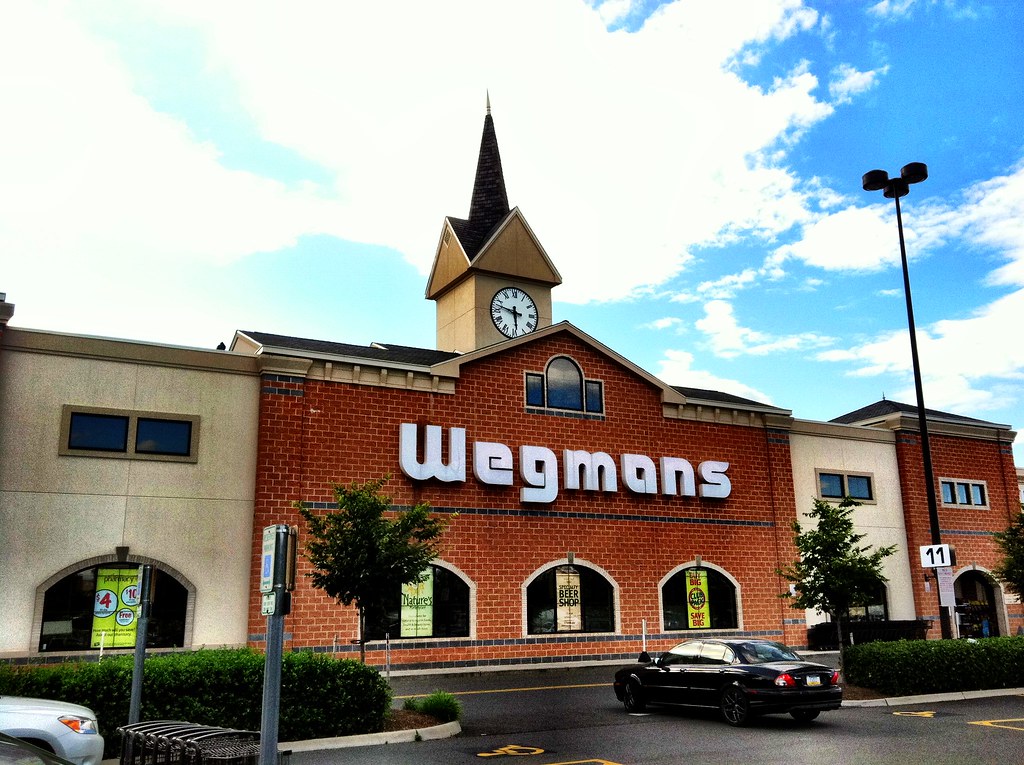
Wegmans, the Rochester, New York-based regional supermarket chain renowned for its distinctive approach to food retail, finds itself at a pivotal juncture, reshaping key aspects of its in-store experience and product offerings. The company, operating 110 East Coast locations, has recently implemented significant changes, including the discontinuation of a long-standing private-label product and the phased rollout of advanced checkout technologies. These strategic shifts underscore a broader industry trend toward balancing customer convenience with operational efficiency and evolving consumer preferences.
At the heart of these recent developments is Wegmans’ commitment to its “Food You Feel Good About” banner, which champions products free from artificial colors, flavors, or preservatives. This foundational principle recently prompted the difficult decision to discontinue the company’s popular private-label soda, affectionately known by its devoted fanbase as “WPOP.” The move, while aligning with the company’s stated health mission, has elicited a diverse range of reactions from its loyal customer base.
The iconic WPOP soda, which first debuted with considerable fanfare in 1991, featured memorable commercials complete with catchy jingles and choreographed dance scenes supporting its “It’s Dynamite” slogan. For decades, priced competitively below major soda brands and available in a wide array of flavors, WPOP cemented its status as a Wegmans’ staple, interwoven into the fabric of many family gatherings and everyday moments.
In a formal statement addressing the discontinuation, the New York-based grocer clarified its reasoning: “We are discontinuing Wegmans Brand Soda because it contains artificial ingredients like aspartame and high fructose corn syrup. We are committed to our mission of helping customers live healthier, better lives through exceptional food, and we want you to feel confident in our Wegmans Brand products.” Similar messages have been displayed across stores, reassuring customers that this change exclusively affects the private-label soda, with third-party soda brands remaining available.

The announcement of WPOP’s departure sparked a wave of disappointment across social media platforms, with many fans lamenting the loss of a product that held significant nostalgic value. One customer poignantly tweeted, “The news today is making me think about WPOP—I think almost every single holiday family snapshot from my childhood features at least one person holding a root beer or a lemon-lime.” Such sentiments highlight the deep emotional connection consumers often forge with long-standing brands.
Yet, the decision was not met with universal acceptance regarding its underlying motives. A segment of customers voiced skepticism, suggesting that the move might be driven more by profit considerations than by genuine health concerns. A Wegmans’ shopper articulated this sentiment on Twitter, stating, “WPOP has been on the market for well over 25 years+. And now they are just finding out something is amiss. Something stinks!!” Another Reddit user echoed this skepticism, questioning the company’s broader product portfolio: “If Wegmans is so concerned for my health, then what about all the other crap they sell.” These reactions underscore the delicate balance retailers must strike when making product changes that impact deeply ingrained consumer habits and perceptions.
A critic on Facebook further challenged the company’s paternalistic approach, asserting, “Should let the customer decide if it’s healthy enough for them or not.” Despite this vocal opposition, a minority of shoppers expressed praise for Wegmans’ decision. One shopper, speaking to 13 WHAM, supported the move, stating, “One of the main reasons I don’t drink soda is because of the unhealthy effects of it. So, the fact that they’re pulling it speaks volumes as to why people shouldn’t be drinking it.” This divergence of opinion illustrates the complexities retailers face in catering to a diverse customer base with varied health perspectives and product preferences.

Beyond product reformulations, Wegmans is also actively redefining the checkout experience within its stores, particularly in the wake of lessons learned from previous technological endeavors. The retailer recently confirmed to PYMNTS via email that it is undertaking a “Test & Learn Pilot with Smart Shopping Carts” at select New York State locations. This initiative signals a cautious yet determined step into the future of in-store digital convenience.
Initially, the smart cart pilot was launched in two stores, including Amherst and Rochester, New York. However, the program has since expanded, with four stores now participating or slated to participate: 6600 Pittsford Palmyra Road in Perinton, 3195 Monroe Avenue in Pittsford, 675 Alberta Drive in Amherst (Erie County), and 6789 East Genesee Street in DeWitt (near Syracuse), which is launching later this month. A Wegmans spokesperson emphasized the preliminary nature of this stage, stating, “It is an early stage technology and we’re in the preliminary stage of our pilot.” The company’s approach is iterative, with a focus on “gathering feedback from a small group of customers” to refine the technology.
The smart cart system, provided by the Israeli tech company Shopic, involves retrofitting existing shopping carts with advanced computer vision technology. This innovation allows cameras to identify products as they are added to or removed from the cart, effectively scanning items as consumers navigate the store. Shoppers can track their spending in real-time, with the touchscreen displaying product price, discounts, and the running cart total.
The most compelling feature for consumers is the ability to bypass traditional checkout lines entirely, allowing payment directly from the cart at the end of their shopping trip. This innovation seeks to address a common pain point for shoppers: the wait at the register. Raz Golan, CEO and co-founder of Shopic, highlighted the broader appeal of such advancements in an interview with PYMNTS, noting, “Shoppers are happier when they have a better experience in the store.” He elaborated, “They buy more, they go back to the store more, and when they wish to, they can pay and go in a matter of a few seconds. This is the general trend, and shoppers are demanding this when they compare the experience of online to these offline physical stores.”
Wegmans’ cautious approach to this emerging technology is well-founded, particularly given its prior experience with self-checkout systems. The retailer previously announced the shutdown of its popular SCAN scan-and-go checkout app, citing significant “losses.” The SCAN app, initially rolled out in 2019 and quickly scaled up in 2020 in response to the COVID-19 pandemic, offered customers a contactless in-store shopping option, allowing them to scan and bag groceries as they shopped and pay with a tap of their phone.
Despite its convenience and the affection it garnered from many users—who often praised its ability to help them “skip the long lines that can form at the grocer’s stores”—the app faced an insurmountable challenge. In an email sent to customers, CEO Colleen Wegman unequivocally stated, “Unfortunately, the losses we are experiencing from this program prevent us from continuing to make it available in its current state.” The app was officially shut down on September 18, with users receiving a $20 digital coupon as a “sign of gratitude.”
While Wegmans did not publicly disclose the specific financial details of these “losses,” industry research and expert commentary point overwhelmingly to heightened shrink, primarily due to theft, as the core issue. A 2018 study by Adrian Beck, an emeritus professor at the University of Leicester, analyzed 140 million scan-and-go transactions across 13 retailers. The research concluded that hundreds of thousands of items went unscanned, leading to substantial losses for the companies involved. Data shared with Beck by one retailer revealed an 18% higher loss rate in stores utilizing scan-and-go apps compared to those without.
Joel Larson, a former Walmart executive, corroborated these concerns, remarking on the challenges of thwarting theft with such systems. He famously stated, “You think that the theft is bad on self-checkouts? Wait until you try Scan and Go, where nobody is watching the customers out in the aisles.” Beck’s report further elaborated on the psychology of “self-checkout abusers,” noting they “feel it is easy to do, reaps rich rewards, and even if they are caught, leads to little or no sanctions being applied.” These insights underscore the inherent vulnerabilities of systems that rely heavily on consumer honesty without adequate oversight.

Wegmans is not alone in grappling with these issues. The grocery industry has seen various retailers experiment with, and sometimes retreat from, self-scan technologies. Walmart, for instance, has had an on-and-off relationship with its own Scan & Go feature, temporarily halting its use in 2018 before relaunching it as “Check Out With Me” for Walmart+ members. Tops Friendly Markets, another regional grocer, acknowledges theft as “a part of an everyday occurrence” but monitors it carefully through “random audits.” Other chains like Meijer, H-E-B, and Hy-Vee continue to offer scan-and-go options, while ShopRite’s Mobile Scan app remains available in some stores despite updates ceasing in 2021.
The advent of smart carts, with their integrated computer vision technology, may offer a more robust solution to loss prevention compared to app-based scan-and-go systems. Since items are automatically scanned as they are placed into the cart, it becomes significantly more challenging for shoppers to leave the store with unpaid merchandise. Gary Hawkins, founder and CEO of the Center for Advancing Retail & Technology, views computer vision technology as a critical “waypoint on the path to fully frictionless checkout methods,” highlighting its numerous benefits for retailers and its decreasing costs.
This embrace of smart carts aligns with a broader industry trend where grocers are increasingly seeking to enhance the in-store experience with digital convenience, striving to compete effectively against the burgeoning e-commerce sector. Research from PYMNTS’ recent study, “Changes in Grocery Shopping Habits and Perception,” based on a December survey of over 2,400 U.S. consumers, indicates that while brick-and-mortar grocery shopping remains significantly more popular—with 54% of customers shopping in stores all the time—e-commerce is experiencing rapid growth, with the online-only share increasing 36-fold since before the pandemic.

The U.S. Bureau of Labor Statistics further projects a 10% decline in the market for cashiers over the next decade, suggesting a future where traditional checkout lines may become a relic of the past. Companies like Amazon, with its Dash Cart and Just Walk Out technology, and Aldi, testing automated checkout options, are at the forefront of this transformation. This evolution promises a shopping journey defined by greater autonomy and efficiency for consumers.
Wegmans’ journey with smart carts, even in its preliminary pilot stage, represents its latest strategic endeavor to strike a precise balance between offering unparalleled convenience and safeguarding its business interests. A Wegmans spokesperson encapsulates this objective: “Our goal is to determine if Smart Cart Technology is a fit for the unique shopping assortment offered in our stores and if it meets the shopping needs of our customers.” As consumer expectations continue to evolve, driven by the seamless experiences offered by online retail, the physical grocery store is undergoing a profound metamorphosis. Wegmans, a retailer celebrated for its customer-centric approach, stands poised at the forefront of this transformation, carefully charting a course toward a future where efficiency, health, and cutting-edge technology converge to redefine the everyday grocery run.
This strategic pivot, from addressing ingredient concerns in beloved products to embracing sophisticated in-store technologies, demonstrates Wegmans’ adaptive leadership in a competitive and rapidly changing retail environment. The ongoing feedback from customers during these pilot programs will be instrumental in shaping the eventual broad implementation of smart cart technology, ensuring that the next iteration of the Wegmans shopping experience truly meets the needs and desires of its devoted clientele. The future of grocery shopping, at Wegmans and beyond, appears to be increasingly frictionless, technologically integrated, and attuned to the subtle demands of the modern consumer.




